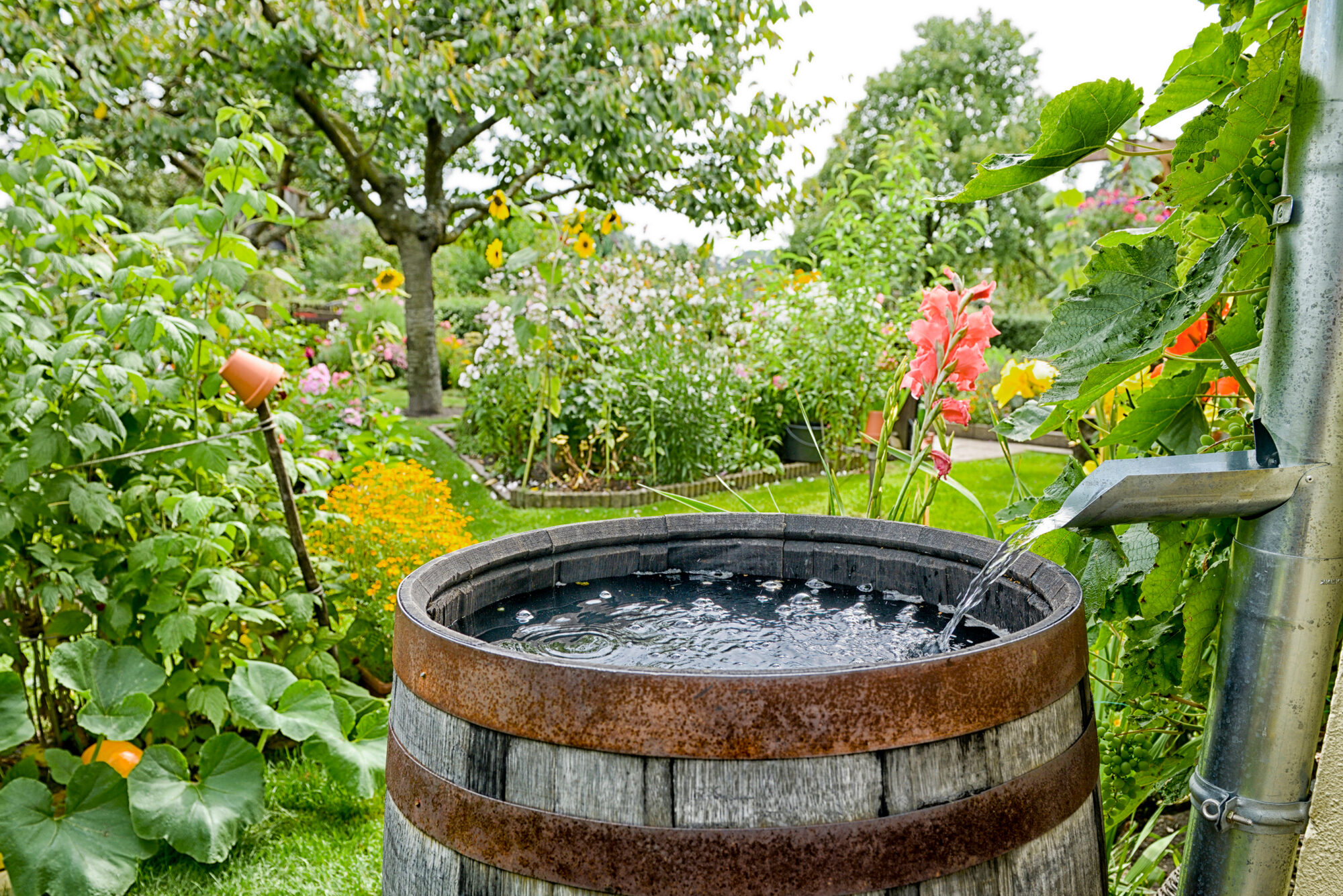
Collecting rainwater is an eco-friendly and cost-effective way to nourish your garden. This guide will provide you with everything you need to know about how to collect rainwater, how to use the collected rainwater and the benefits of rainwater harvesting.
Why Collect Rainwater?
Understanding the importance of rainwater collection is the first step:
- Cost Savings: Reduce your water bill by utilizing free rainwater for your garden and outdoor needs.
- Environmental Impact: Decrease reliance on municipal water supplies and minimize runoff, which can lead to erosion and water pollution.
- Plant Health: Rainwater is free from chlorine and other chemicals found in tap water, making it better for your plants.
- Water Conservation: Helps conserve water, especially during dry periods or droughts.
Materials You’ll Need to Collect Rainwater:
- Rain Barrel: A large container specifically designed to collect rainwater.
- Downspout Diverter: A device to channel water from your gutter into the rain barrel.
- Screen or Filter: To keep debris out of your rain barrel.
- Hose or PVC Pipe: For distributing the water from the barrel to your garden.
- Spigot: To control the flow of water from the barrel.
- Overflow Valve: To manage excess water.
- Bricks or Cinder Blocks: To elevate the rain barrel for gravity-fed distribution.
Step-by-Step Guide on How to Collect Rainwater:
- Choose a Location for Your Rain Barrel: Select a spot near a downspout on your house. Ensure the area is level and sturdy enough to support a full barrel.
- Prepare the Base: Elevate your rain barrel using bricks or cinder blocks. This elevation will create the necessary gravity to help distribute the water through your hoses or pipes.
- Install the Downspout Diverter: Cut your gutter downspout above the height of the rain barrel and attach the diverter. The diverter will channel rainwater into the barrel while allowing overflow to continue down the gutter.
- Set Up the Rain Barrel: Place your rain barrel under the diverter. Install a screen or filter on top to keep leaves and debris out. Attach an overflow valve to manage excess water.
- Install the Spigot: Attach a spigot near the bottom of the barrel. This will allow you to control the flow of water from the barrel to your garden.
- Connect the Distribution System: Attach a hose or PVC pipe to the spigot. Run the hose or pipe to your garden, ensuring it reaches all areas that need watering.
- Test Your DIY Rain Catcher Barrel: Once everything is connected, test your system. Open the spigot and ensure water flows through the hoses or pipes to your garden beds. Adjust as necessary to ensure even distribution.
- Maintenance: Regularly check your system for leaks or blockages. Clean the filter or screen periodically to ensure optimal water flow. During winter, drain the barrel and disconnect hoses to prevent freezing damage.
How to Use Collected Rainwater:
- Garden Irrigation: Use the rainwater to water your garden plants, flowers, and lawns. Attach a soaker hose or drip irrigation system for efficient watering.
- Household Uses: Rainwater can be used for non-potable purposes such as washing cars, cleaning outdoor furniture, and flushing toilets (with proper filtration and plumbing adjustments).
- Composting: Keep your compost pile moist with rainwater to speed up the decomposition process.
Benefits of Collecting Rainwater:
- Sustainable Practice: Helps reduce the strain on local water supplies and promotes sustainable water use.
- Reduced Erosion: By capturing rainwater, you help reduce surface runoff and erosion around your property.
- Improved Plant Growth: Plants thrive with chemical-free rainwater, leading to healthier and more robust growth.
By following these steps, you can easily set up a DIY rain catcher barrel and enjoy the numerous benefits of rainwater collection. Not only will you save money, but you’ll also contribute to environmental conservation and ensure your garden gets the best possible water. Happy gardening!
For more tips visit https://thefarmtrader.com and go to my Farm Chatter section!



